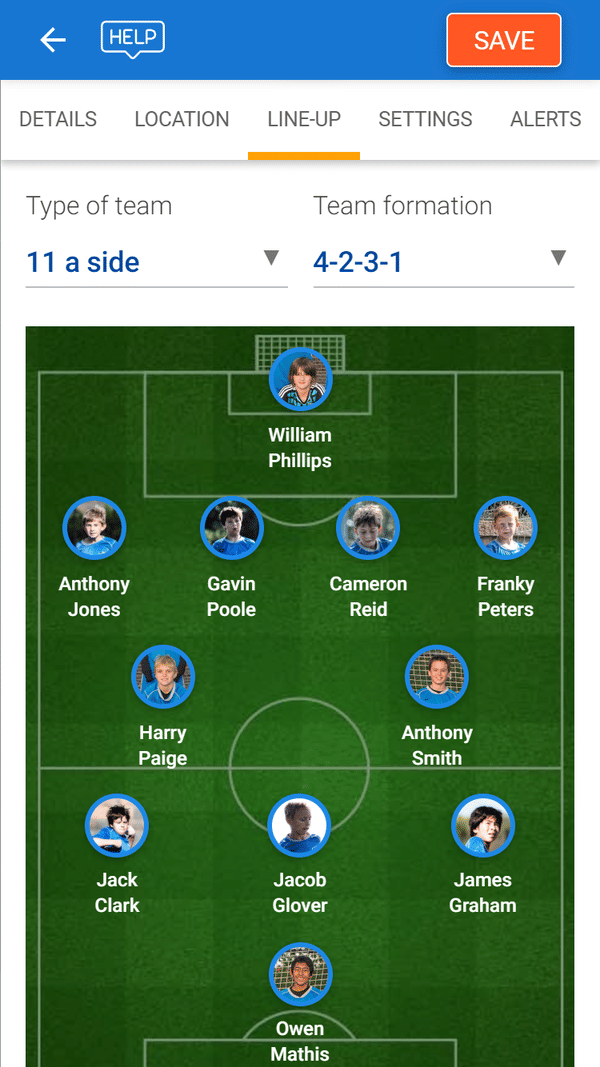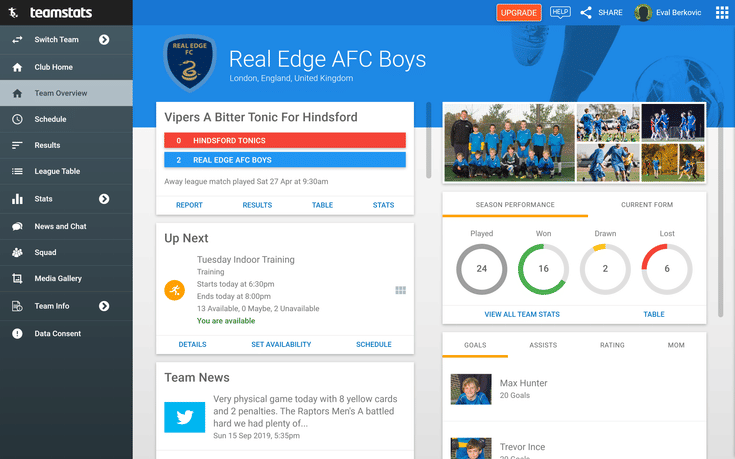In today's digital age, football coaching has evolved beyond clipboards and whistles. Modern coaches now have access to powerful mobile applications designed specifically to enhance training sessions, track player development, and streamline team management. These apps offer everything from customisable practice plans to tactical boards, helping coaches at all levels improve their effectiveness on the training ground.
The right coaching app can transform how you manage your team, allowing you to create structured training sessions, organise fixtures, and communicate with players all from your smartphone or tablet. Many platforms now offer extensive drill libraries and video analysis tools that were once only available to professional clubs, making high-quality coaching resources accessible to grassroots teams throughout the UK.
Football (or soccer, as it's known in some regions) coaching technology continues to advance rapidly, with new features being developed to address specific challenges faced by amateur coaches. From planning age-appropriate drills to tracking attendance and performance metrics, these digital tools are becoming essential companions for dedicated coaches looking to maximise their impact with limited time and resources.
Choosing the Right Football Coaching Apps
Selecting an appropriate football coaching app requires careful consideration of compatibility, features, and usability factors to ensure it meets your specific coaching needs and technical requirements.
Platform Compatibility: Windows, Mac, iOS, and Tablets
When selecting a football coaching app, platform compatibility should be a primary consideration. Many leading applications offer cross-platform functionality, allowing coaches to transition seamlessly between devices.
Windows and Mac versions typically offer more comprehensive features, making them ideal for detailed match analysis and season planning. These desktop versions often provide expanded viewing options for tactical boards and statistical analysis.
iOS and tablet versions excel in pitch-side scenarios, offering touchscreen functionality perfect for making real-time adjustments during training sessions. The portability factor makes tablets particularly valuable for coaches who need to demonstrate techniques or formations directly on the training ground.
Consider which devices you use most frequently in your coaching routine. The ideal solution provides synchronisation across all platforms, ensuring your data remains consistent whether you're planning at home or delivering sessions on the pitch.
Features and Functionality
The effectiveness of a coaching app hinges on its feature set. Look for tools that offer comprehensive practice planning capabilities, allowing you to design structured training sessions with specific objectives.
Essential features to consider:
- Tactical board functionality with customisable formations
- Video analysis tools for match and training review
- Player performance tracking and statistical analysis
- Training drill libraries with customisation options
- Team management features (attendance, contact information)
More advanced apps include season planning calendars and periodisation tools to manage player workloads throughout the campaign. Some platforms incorporate GPS integration for fitness monitoring during training sessions.
Evaluate whether the app allows for collaboration with assistant coaches through shared access to plans and analyses. The ability to export and share content with players is also valuable for modern coaching approaches.
User Experience and Accessibility
An intuitive interface makes a significant difference in how effectively you can implement an app into your coaching workflow. The best applications balance powerful features with ease of use.
Look for clear navigation structures and logical menu layouts. Apps with customisable dashboards allow you to prioritise the tools you use most frequently, reducing time spent searching through menus.
Consider the learning curve required. Some feature-rich platforms require substantial time investment before achieving proficiency, while simpler tools offer immediate utility but may lack depth.
Offline functionality is crucial for coaches working at grassroots levels where pitch-side internet connectivity may be unreliable. The ability to download and access plans without an internet connection ensures your sessions run smoothly regardless of location.
Cost structures vary significantly across different applications. While some premium solutions require substantial investment, they often provide comprehensive support and regular updates that justify the expense for serious coaching setups.
Developing Effective Practice Plans
Effective practice planning is essential for football coaches aiming to develop players' skills and team cohesion. Modern coaching apps have transformed how coaches create, implement and adapt their training sessions to meet specific objectives.
Designing a Training Regimen
Creating a structured training regimen requires careful consideration of your team's needs and objectives. Begin by establishing clear goals for the season and breaking them down into weekly development targets. This approach ensures consistent progression rather than disjointed sessions.
Football coach apps now offer libraries of drills categorised by skill focus, making it simpler to build coherent training programmes. These tools allow coaches to sequence activities that build upon each other, gradually increasing complexity.
Consider the balance between technical skills, tactical understanding, physical conditioning and mental aspects. A well-designed regimen addresses all these components throughout the week.
Many apps now provide templates that can be customised to your team's specific requirements, saving valuable planning time while ensuring comprehensive coverage of essential skills.
Customizing Drills for Skill Levels
Adapting drills to accommodate different ability levels within your squad is crucial for maximising development. Modern coaching platforms enable you to filter exercises by difficulty, making it straightforward to find appropriate challenges for everyone.
Begin by assessing your players' current capabilities across key technical areas such as passing, shooting and defending. This baseline helps identify areas needing focused attention.
For mixed-ability groups, implement progression and regression options within drills. This approach allows more skilled players to be challenged while providing achievable targets for developing team members.
Digital planning tools often include modification suggestions for each drill, helping coaches quickly adapt exercises without extensive redesign. Many apps also include visual demonstrations, ensuring coaches understand how to implement variations effectively.
Managing Training Schedules
Efficient schedule management ensures optimal use of limited pitch time and helps maintain player engagement. Digital planning tools now allow coaches to pre-build sessions and share them with assistants, creating a more coordinated approach.
Track session intensity and focus areas to prevent overtraining and ensure balanced development. Many platforms allow tagging of drills by physical demand, making it easier to alternate between high and low-intensity activities.
Weather contingencies can be prepared in advance with indoor alternatives ready in your digital library. This preparedness prevents wasted sessions when conditions change unexpectedly.
Consider incorporating periodisation into your planning, varying intensity and focus throughout different phases of the season. The best practice planning apps enable you to view your schedule across weeks or months, helping identify patterns or gaps in your training approach.
Regular review of completed sessions helps coaches refine future plans based on what proved most effective with their particular group of players.
Leveraging Digital Playbooks
Digital playbooks have revolutionised how football coaches plan, communicate and implement their tactical vision. These tools transform traditional paper diagrams into interactive experiences that enhance understanding and execution on the pitch.
Playbook Creation Tools
Digital platforms now offer intuitive interfaces where coaches can create detailed playbooks without artistic skills. Drag-and-drop functionality allows for quick design of set-pieces, attacking patterns and defensive structures. Many tools include pre-made templates that coaches can customise to suit their team's specific style of play.
Coaches can use colour-coding to differentiate player roles and responsibilities within formations. The ability to add animations demonstrates how movements should unfold in real-time, making complex tactical concepts easier to understand.
The precision of digital tools ensures consistency in how plays are drawn and presented. This standardisation helps players recognise patterns more effectively, regardless of which formation the team is employing.
Teaching Formations and Tactics
Modern playbook tools excel at illustrating different formations and how players should transition between them during matches. Coaches can show the 4-3-3 transforming into a 4-5-1 when defending, with clear visual guides for player positioning.
These platforms allow coaches to layer tactical information gradually, preventing players from becoming overwhelmed. Start with basic positional play before adding pressing triggers, passing lanes and movement patterns.
The interactive nature of digital playbooks means players can manipulate formations themselves, improving their spatial awareness and tactical understanding. Some advanced systems even incorporate video footage alongside tactical diagrams, providing real-world context for theoretical concepts.
Sharing Playbooks with the Team
Distribution of playbooks has become seamless with digital platforms. Coaches can instantly share updated tactical information with the entire squad through team portals or mobile apps.
Players receive notifications when new content is added, ensuring everyone stays informed about tactical adjustments. Access controls allow coaches to share specific sections with relevant player groups—defensive schemes with defenders, attacking patterns with forwards.
Digital playbooks enable interactive learning, where players can study formations and plays at their own pace. Some systems track which players have viewed materials, helping coaches identify who might need additional tactical guidance.
Remote access to playbooks proves particularly valuable for grassroots teams that train less frequently than professional sides. Players can review tactical information between sessions, maximising limited training time when the team does gather in person.
Show less











